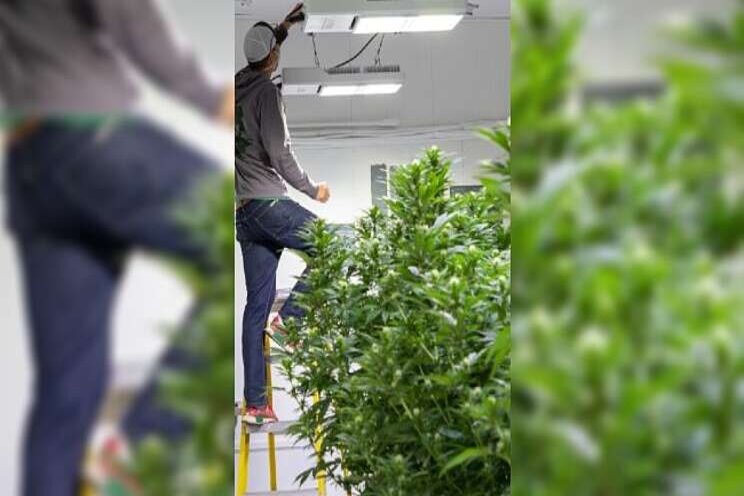How LED lighting can boost sustainability in cannabis
Added on 24 June 2021

Understanding the total cost of ownership for your grow lighting is crucial. And this all begins with the choice of lighting equipment. High-pressure sodium (HPS) or metal halide (MH) lighting fixtures have been a staple of the agriculture community for years. But while they are well understood and reliable technologies, they often create additional issues that the operator must then also address to achieve a suitable growing environment.
Enter LEDs
Light-emitting diode (LED) technology has also been around for years, but is a much more recent addition to the cultivator's toolbox. Early LED options were criticized for several factors, including their spectrum coverage and their cost. But more modern LED options have proven themselves to be worthy successors to the lighting throne. Advances in LED technology have produced products that improve upon nearly every aspect of HPS and MH solutions.
"LEDs have come a long way over the years. I've seen the performance and efficiency gains catch and then exceed our beloved HPS fixtures," says Marco Malatrasi, Director of Operations for Fluent, a multi-state operator with a number of different facilities. "While the upfront capital investment may be higher with LEDs, the savings are realized in reduced operating costs."
Doing Well by Doing Good
As mentioned earlier, understanding all the inputs into the total cost of ownership equation is necessary to make an accurate comparison between technologies. Two of the most important factors are energy consumption and HVAC load.
"We made a significant investment in LED technology in response to increasing customer demand for more energy-efficient lighting solutions," says Adam Mccuiston, Chief Marketing Officer for Hawthorne Gardening Company, a provider of cultivation supplies to the cannabis industry. "Our latest LED products give cultivators powerful tools for increasing their yields while simultaneously improving our customers' environmental impact."
Compared to other technologies, LED usage can lead to a 20% to 30% reduction in KwH. LEDs are simply more energy efficient. Electricity costs represent a significant percentage of a facility's operating budget. Anything that can be done to reduce energy utilization has a direct impact on profitability.
HVAC load is one of those unintended consequences of using technologies like HPS or MH. Both older technologies produce a significant amount of heat. To optimally control the environment, the additional heat must be dealt with. This means an increased utilization of the facility's HVAC systems, which lead to increased energy costs as well.
"I feel the biggest boon is the energy savings LEDs offer," Malatrasi says. "I can reach the same PAR levels at my canopy with less overall wattage driving the fixture. And on top of that, there are less BTUs entering my cultivation space, which means less cooling required, giving me two ways to reduce electricity costs. As a subtropical producer, I get plenty of solar gain in our greenhouse, so limiting the Llng wave radiation (heat) output by the fixture is just another benefit to keeping my plant foliar temps in spec."
Added Benefits of LED Usage
LEDs are the clear winner when it comes to energy consumption. But LEDs also have other advantages. For example, in many areas, using LED lighting makes the operator eligible for rebates from their utility provider. While these rebates vary by location, they are well worth investigating as they can help defray initial purchase costs. And when you factor in the reduction in energy consumption, newer LED lighting can pay for itself over the life of the unit.
Furthermore, LEDs require less maintenance than HPS or MH options. Labor spent on re-lamping or on the annual disposal of mercury lamps goes away. And without the extra heat and maintenance, the use of LED lighting improves employee comfort inside your facility.
"In the greenhouse environment, where our fixtures are often mounted high above canopies, there is something to be said about not having to go up and change bulbs or wipe down reflectors; less surface area to block the sun, and to keep clean," Malatrasi says.
Environmentally Friendly and Good for Your Bottom Line
Reducing energy consumption and waste (e.g., disposing of mercury lamps) help improve a facility's impact on the environment. It can also help your profitability. Spending less energy to achieve the same or greater yield improves profitability. That's a huge win-win for operators and the environment.
And according to Malatrasi, "Now more than ever, consumers are paying attention to the carbon footprint generated by our production methods. LEDs are an obvious choice for immediately reducing energy consumption and growing a sustainable industry."
Source and Photo Courtesy of Greenhouse Grower
Source: Greenhouse Grower
More news















